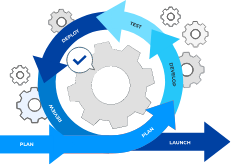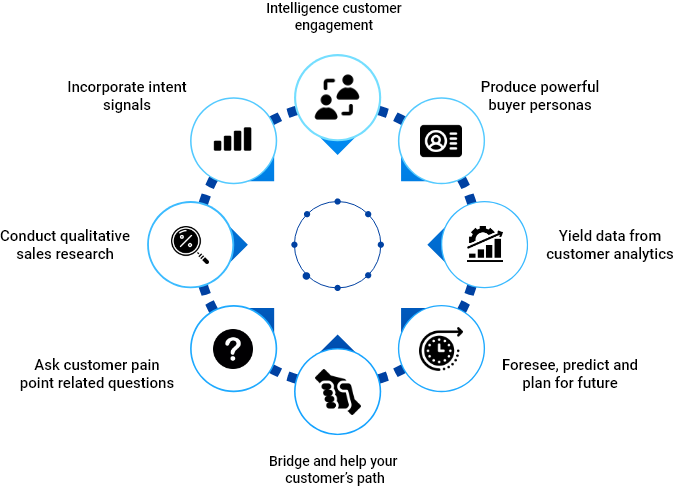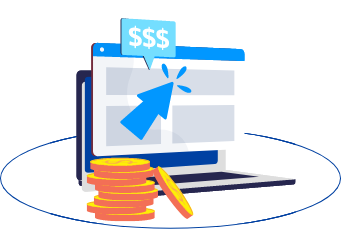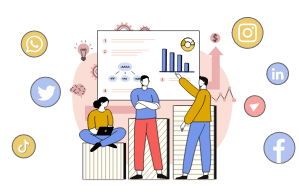Subscribe to Our Newsletter
Stay updated with the latest tips and strategies. Get additional discounts and alerts on offers.

Today, we will look at B2B customer pain points, particularly at what they are and how you can position your organization as a viable solution. We will look at a few real-world techniques to see how marketers address some of the most prevalent consumer pain problems, as well as provide basic advice on how to become indispensable to your prospects at the right time and in the right location.
Let’s start with the basics before moving on to the core.
Table of contents
A customer pain point, in simple terms, can be defined as a specific problem that prospective customers of your business or company are experiencing. These customer pain points may vary from one individual to another. Thus, expect them to be as diverse and varied as your customers themselves.
On the other hand, not all your prospective customers are aware of the pain points they’re going through. Clarify what these are to ensure that your proposed solution will successfully address their issues.
Although you consider pain points as simple problems, they’re usually categorized into wider classes.
It is well-known and obvious that businesses exist to make money and are concerned about returns on investment at the end of the day. This can act upon your marketing system at a high level when it comes to your customers’ pain points and you might recognize them when your prospects say things like:

These categorize into financial pain points and you could step in to fix their problems and generate your business.
For many businesses, lost time is definitely a significant issue. Businesses want their people to focus on delivering their best for the company, and anything that distracts from it is a big pain point.
General productivity pain points businesses commonly have:

Processes are an important component of operations, but they aren’t always as efficient as they may be.
“A process constitutes the lifeline for any organization, and helps it streamline individual activities, ensuring that resources are put to the best possible use.”
If this isn’t the case, it will cause issues throughout the company, producing pain points at various places.
Here are several examples:

Internal processes, such as assigning leads to sales agents or nurturing lower-priority leads, are something your prospects want to enhance.
Businesses are only as good as their employees. If a company has difficulty hiring brilliant personnel, getting the most out of its employees, or keeping its finest employees, it will suffer major consequences.
The following are some possible symptoms of these pain points:

Internal processes, such as assigning leads to sales agents or nurturing lower-priority leads, are something your prospects want to enhance.
Businesses may have solutions in place to address some of their pain points, but they may not be able to fix the problem if they lack the appropriate assistance. Some problems are complex, and companies are looking for the correct instruments to give a comprehensive solution.
If your prospect’s concerns are about support, they may say something like:

By categorizing consumer pain issues, you may begin to consider how to present your company or product as a solution to your prospects’ concerns, as well as what you’ll need to keep them satisfied. If your prospects’ primary concerns are financial, for example, you could emphasize the benefits of your product in the context of a reduced monthly subscription plan, or emphasize the enhanced ROI that delighted customers have after becoming a client.
While this way of categorizing is a solid start, it’s not as simple as recognizing price as a pain point and then claiming that your product or service is less expensive than the competitors. Many potential consumers’ difficulties are multi-layered and complex, involving issues from the categories listed above.
That’s why you need to look at your consumers’ problems holistically and promote your organization as a solution to a range of problems, not just one particularly difficult one.

Realize that understanding who the key stakeholders are and who’s in charge of making decisions, plays a crucial role in resolving your customer’s pain points. It also eases your way to reach the right people with your communication, enabling them to resolve the pain point.
This will not be possible if your salespeople are simply concerned about making rapid sales.
It takes open communication and empathy, so avoid industry jargon and speak in the customer’s language.
Every day, your company assists people in resolving problems. Use social evidence to demonstrate how you do this.
Because social proof is one of the most powerful motivators when it comes to purchasing decisions, it must be a component of your strategy.
Making a sale and then forgetting about the customer is not good sales. You want to assist customers in getting the most out of your products, which means you should collaborate with them to address pain spots throughout the client experience.
You want your clients to return to you again and again. To accomplish so, you must continue to alleviate people’s problems.
There’s nothing wrong with including customers in your company’s quest for a brighter future. Tell your customers if you’re making improvements to solve trouble issues. If you’ve already made adjustments, telling the story of how you detected and remedied these issues is a wonderful approach to show customers that you care about their experience. Customers will have more faith in your brand since they see that you value their experience.
So, since you understand your customers’ pain issues, we are ready to move on to the next phase. The first step is to identify the problems that your clients are having. However, if your product or service isn’t constantly evolving to meet those pain areas, something is wrong.
By putting yourself in the shoes of the customer, you can avoid this.

Think like your customer and imagine how you could lessen their pain points based on your own experiences.” When you put yourself in the shoes of a consumer, you will have a better understanding of their problems, what their difficulties are and how to address them.
The key is to learn to anticipate your clients’ pain spots and fix them before they become a major issue. Customers, for example, rarely enjoy requesting assistance. Try developing a customer support system that eliminates the need for customers to seek assistance. This might include adding an automated chatbot to your website so clients don’t have to call you if they have a problem. You might also create a comprehensive FAQ page that asks and answers many of the issues your customers have asked (and forecasted).
The bottom line is when it comes to pleasing customers make it simple. But, exactly, what does “making it easy” imply? It means “remove impediments,” according to HBR. Instead of going overboard with your joy marketing, concentrate on lowering the amount of work a customer has to expend to solve their problem. This not only increases client loyalty, but it can also “assist in improving customer service, lowering customer service expenses, and customer churn.”
As now we have a clear and better ground of basics, let’s see how can we address B2B customer pain points in the best ways.

Social ads were maybe even more effective than search ads at addressing customer problem areas. Why? Because many people use social media sites like Twitter and Facebook to express their aspirations, we post updates that represent who we want to be rather than who we are right now.
Social ads ease the process of addressing specific pain points in a better and appealing way to the target consumer.

Emotional triggers and highly precise pain areas can be combined in well-crafted social ads.

Coming to one of the most successful areas of the conversion funnel, the simple landing page can discuss how to utilize client pain issues in your marketing.
You may be directed to a landing page by a CTA or by a simple search. It can also be the page that appears after clicking on a call-to-action button or the home page of a website. The goal of a landing page, regardless of how you “land,” is to persuade you to convert into a lead or customer.

You can address your customers’ pain points in a strategic and planned way, and give away the solution (most probably your product/service’s links).
Hopefully, you now have a better understanding to identify and address your customers’ pain points. Despite the fact that many customer pain points are identical, there is no one-size-fits-all answer for alleviating your customers’ suffering.
Fortunately, no one understands your customers better than you, so get to work on your study and start assisting your customers in achieving their goals.
We hope you liked our article and let us know if you have any other suggestions for assisting clients with their problems!
Show Some Love!

Subscribe to Our Newsletter
Stay updated with the latest tips and strategies. Get additional discounts and alerts on offers.
Related Articles
Subscribe to Newsletter
Stay up to date with the latest marketing, sales, and service tips and news.
